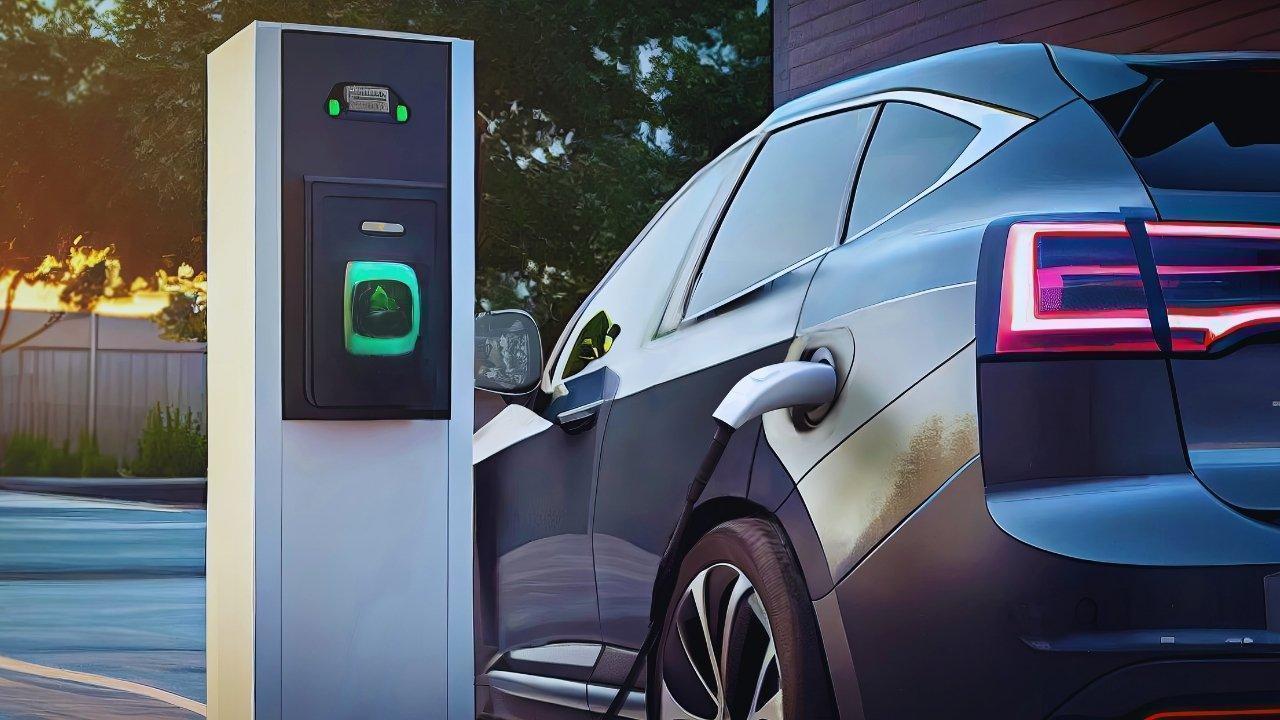
Join 10k+ people to get notified about new posts, news and tips.
Do not worry we don't spam!

Post by : Anis Farhan
The electric vehicle (EV) revolution is no longer confined to metropolitan hubs. India’s tier-2 cities are witnessing an accelerating adoption of EVs, fueled by environmental concerns, government incentives, and rising consumer awareness. Unlike tier-1 cities, where infrastructure and consumer familiarity are more developed, tier-2 cities present unique opportunities and challenges for EV adoption.
These cities, with populations ranging from 1 to 5 million, are experiencing rapid urbanization and rising disposable incomes. They are increasingly attractive markets for EV manufacturers and fleet operators looking to expand beyond traditional urban centers. Understanding the dynamics of EV adoption in these emerging urban markets is essential for stakeholders, from policymakers to investors and consumers.
Over the past five years, EV sales in tier-2 cities have shown exponential growth. This growth is driven by multiple factors:
1. Rising Environmental Awareness
Air pollution and carbon emissions have become critical issues in smaller cities, where industrial growth often coincides with inadequate environmental regulation. Residents are increasingly seeking sustainable alternatives to conventional petrol and diesel vehicles, making EVs an attractive option.
2. Government Policies and Incentives
State and central government initiatives, such as subsidies for EV purchases, reduced road taxes, and incentives for local manufacturing, have played a significant role in promoting adoption. These policies not only lower the initial cost of EVs but also encourage the development of local charging infrastructure.
3. Affordability and Accessibility
The introduction of more affordable EV models, including electric scooters, motorcycles, and small hatchback cars, has expanded the market to middle-income households. Tier-2 city consumers are more price-sensitive, and manufacturers are tailoring their offerings to meet local demand.
4. Expansion of Charging Infrastructure
Although tier-2 cities face infrastructural constraints, recent investments by public and private entities have improved access to charging stations. Workplace and residential charging options are becoming increasingly common, making EV ownership more practical.
5. Fleet and Shared Mobility Initiatives
Ride-sharing companies and taxi operators are incorporating EVs into their fleets, reducing operational costs through lower energy and maintenance expenses. These initiatives expose a wider audience to EV technology and create visible proof of their viability in urban settings.
Despite encouraging growth, several challenges continue to limit widespread EV adoption in smaller cities:
1. Limited Charging Infrastructure
While charging networks are expanding, the density of stations in tier-2 cities remains far lower than in metros. Consumers often experience range anxiety, fearing that they may be stranded without accessible charging points.
2. High Initial Costs
Although government subsidies reduce the upfront cost of EVs, they remain higher than comparable internal combustion engine vehicles. For price-sensitive buyers, this can be a significant barrier, particularly when resale values and battery life are uncertain.
3. Inconsistent Power Supply
Many tier-2 cities face frequent electricity disruptions, which can hinder charging convenience. Additionally, local grids may not be equipped to handle mass adoption, leading to potential load management issues.
4. Awareness and Consumer Education
Knowledge gaps about EV technology, maintenance requirements, and total cost of ownership persist. Many potential buyers are unaware of the long-term savings and environmental benefits, leading to hesitation in adopting new technology.
5. Supply Chain and Service Limitations
Smaller cities often lack sufficient EV dealerships, service centers, and spare parts availability. Limited after-sales support can discourage first-time buyers, as reliability and maintenance concerns weigh heavily in purchase decisions.
Government intervention has been pivotal in driving EV adoption beyond tier-1 cities. Several programs target tier-2 urban centers specifically:
1. FAME India Scheme (Faster Adoption and Manufacturing of Electric Vehicles)
This national initiative provides incentives for electric two-wheelers, three-wheelers, and buses. By subsidizing upfront costs and promoting local manufacturing, the scheme makes EVs more affordable for consumers in smaller cities.
2. State-Level Subsidies and Tax Breaks
Many state governments offer additional incentives, including reduced road taxes, registration fees, and purchase subsidies. States like Gujarat, Maharashtra, and Karnataka have implemented programs targeting tier-2 urban populations, creating localized adoption momentum.
3. Charging Infrastructure Grants
Public-private partnerships and government grants have enabled the installation of public charging stations. Cities are encouraging developers, malls, and commercial complexes to provide charging points to facilitate everyday EV use.
4. Localized Public Transport Electrification
Municipal authorities are gradually electrifying city buses and autorickshaw fleets. This not only reduces emissions but familiarizes the public with EV technology, building trust and confidence in the broader adoption of electric vehicles.
Tier-2 city consumers exhibit unique behaviors that influence EV adoption:
1. Preference for Two-Wheelers
Electric scooters and motorcycles dominate the market, reflecting affordability, ease of use, and suitability for narrow city streets. These vehicles offer an entry point into EV ownership for middle-class families.
2. Focus on Cost Savings
Consumers prioritize total cost of ownership, including fuel savings and maintenance. Clear communication of long-term economic benefits is critical to influencing purchasing decisions.
3. Gradual Shift to Cars
Electric cars are gradually gaining traction in tier-2 cities, primarily through small hatchback models and compact sedans. Rising incomes and the success of early adopters are gradually building confidence in EV cars.
4. Influence of Peer Adoption
Word-of-mouth and community influence play significant roles in tier-2 cities. As more neighbors, colleagues, and local fleet operators adopt EVs, social validation encourages others to consider the technology.
Technological innovation is crucial in overcoming adoption barriers in tier-2 cities:
1. Battery Technology Improvements
The development of high-capacity, long-life batteries reduces range anxiety and enhances vehicle reliability. Swappable battery systems are being tested to provide rapid recharging options in regions with limited infrastructure.
2. Smart Charging Solutions
Mobile apps and smart grids are enabling better energy management, allowing users to locate stations, monitor battery health, and schedule charging during off-peak hours.
3. Lightweight Materials and Vehicle Efficiency
Innovations in lightweight materials and energy-efficient motors increase driving range, reduce costs, and enhance performance, making EVs more appealing to consumers.
4. Integration with Renewable Energy
Solar-powered charging stations and renewable energy integration reduce operational costs and carbon footprints, further incentivizing environmentally conscious consumers.
EV adoption in tier-2 cities provides both ecological and economic advantages:
1. Reduced Air Pollution
EVs produce zero tailpipe emissions, mitigating air quality challenges that affect public health, particularly in rapidly urbanizing areas.
2. Lower Noise Pollution
Electric motors are quieter than traditional engines, contributing to a more pleasant urban environment.
3. Energy Security and Cost Savings
EVs reduce dependence on imported fossil fuels and provide cost savings to households and fleet operators over the vehicle lifecycle.
4. Job Creation
The EV ecosystem — including manufacturing, charging infrastructure, and maintenance services — creates employment opportunities in tier-2 cities, stimulating local economies.
The future of EVs in tier-2 cities looks promising, driven by policy support, technological progress, and changing consumer behavior:
1. Scaling Infrastructure
Investment in dense and reliable charging networks will address range anxiety and support higher adoption rates.
2. Increasing Affordability
As battery prices decline and economies of scale improve, EVs will become accessible to a broader demographic, accelerating penetration in smaller cities.
3. Smart Mobility Ecosystems
Integration of EVs with ride-sharing, public transport, and urban mobility planning will create efficient, sustainable transportation systems.
4. Innovation in Financing Models
Leasing, battery-as-a-service, and subscription models can reduce upfront costs and make EV ownership feasible for middle-income consumers.
5. Public Awareness Campaigns
Education and outreach programs highlighting environmental benefits, cost savings, and technological reliability will continue to drive adoption.
Electric vehicles are no longer limited to India’s metropolitan hubs; tier-2 cities are emerging as vital markets in the EV revolution. Rapid urbanization, government incentives, and rising consumer awareness are fueling adoption, while technological advances and expanding infrastructure make EV ownership increasingly practical.
Challenges remain, including infrastructure gaps, high initial costs, and the need for consumer education. However, the potential benefits — reduced pollution, energy savings, economic growth, and job creation — make EV adoption a critical component of sustainable urban development.
By addressing these challenges through innovation, policy support, and public-private collaboration, India’s tier-2 cities can lead the next phase of the EV revolution, demonstrating that sustainable mobility is not only feasible but also transformative for millions of urban residents.
This article is for informational purposes only. It does not constitute investment, financial, or legal advice. Readers should independently verify information and consult professionals before making business or investment decisions related to electric vehicles.










India Wins First Women’s World Cup 2025 Title
India lifts its maiden Women’s World Cup 2025 title! Harmanpreet Kaur’s team stuns South Africa in a

Manuel Frederick, 1972 Olympic Bronze Goalkeeper, Dies at 78
Manuel Frederick, a member of India’s 1972 Olympic bronze hockey team, has died in Bengaluru at 78 a

Muhammad Hamza Raja Wins IFBB Pro Card Puts Pakistan & UAE on Global Stage
Pakistani bodybuilder Muhammad Hamza Raja earns IFBB Pro Card in Czech Republic, showcasing Dubai’s

Shreyas Iyer’s Recovery Underway After Spleen Laceration in Sydney ODI
Shreyas Iyer is recovering after a spleen laceration sustained while taking a catch in the Sydney OD

Qatar Ready to Host FIFA U-17 World Cup 2025 in Aspire
Qatar confirms full readiness to host the FIFA U-17 World Cup 2025 from November 3–27, with world-cl

Wolvaardt’s 169 Sends South Africa Into Women’s World Cup Final
Laura Wolvaardt’s 169 powered South Africa to a 125-run semi-final win over England, booking a place